May 29, 2025 | 21:17 GMT +7
May 29, 2025 | 21:17 GMT +7
Hotline: 0913.378.918
May 29, 2025 | 21:17 GMT +7
Hotline: 0913.378.918
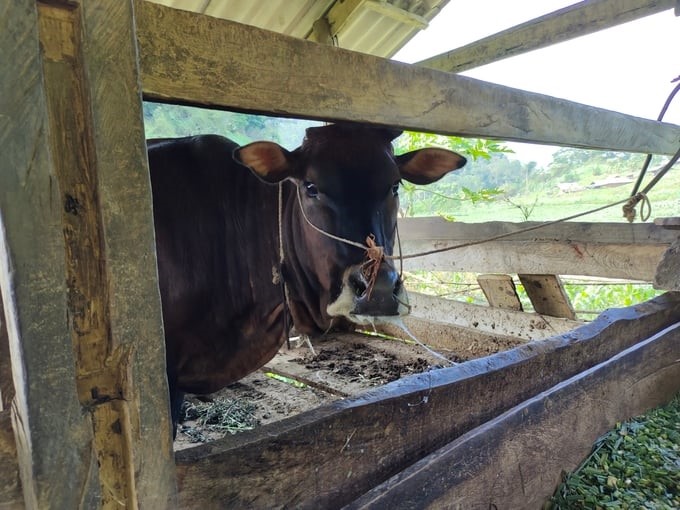
Mr. Giang Se Sinh's cows showed symptoms of foot-and-mouth disease, and specialized agencies have zoned out to prevent the epidemic. Photo: Ngoc Tu.
Mrs. Dang Thi Nai's family, Tan Lap commune (Cho Don district), has five cows, of which four were newly purchased from other places to raise. After a few days, the cows showed manifestations of being sick and eating less, similar to symptoms of foot-and-mouth disease.
Mr. Giang Se Sinh's household, Mrs. Nai's neighbor, also has six cows with the above-mentioned symptoms. Immediately after that, the two families sprinkled lime, sprayed disinfectant, and reported to the local government.
After receiving the information, the Tan Lap Commune People's Committee coordinated with the Cho Don District Agricultural Service Center to inspect the cow herd. The inspection results showed that the clinical manifestations of 11 cows from the two households mentioned above were similar to those of foot-and-mouth disease.
Mr. Leng Van Hieu, Chairman of Tan Lap Commune People's Committee, said that after discovering the cattle herd showing symptoms suspected of foot-and-mouth disease, the commune also requested disinfection spraying twice a day for households suspected of having the disease.
The commune has implemented zoning to avoid spread, repeated vaccination on the cattle herd, and requested people not to transport cattle in or out of the locality during this time.
Mrs. Hoang Thi Thuy, Director of Cho Don District Agricultural Service Center, said that the Center has provided 200 additional doses of vaccines against foot-and-mouth disease and pasteurellosis and 36 liters of chemicals to Tan Lap commune to prevent and control the epidemic.
At the same time, coordinate with communes to strengthen dissemination and guide people on epidemic prevention and control measures. Specialized agencies also recommend that when buying buffaloes and cows from other places to raise, people should find out the origin and have buffaloes and cows fully vaccinated.
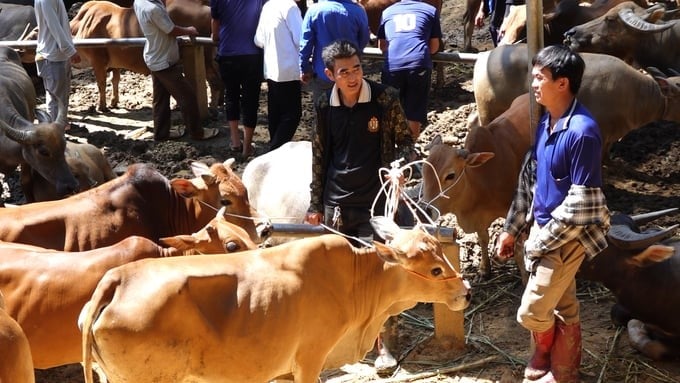
The high density of buffaloes and cows in markets in Bac Kan poses a risk of epidemic spread. Photo: Ngoc Tu.
In Bac Kan, the livestock industry plays an important role, in which cattle farming brings significant income to thousands of households each year. Currently, the total cattle herd in Bac Kan province is more than 50,000 heads. In the context of the African swine fever epidemic that is complicated and has broken out in many places, cattle farming has become a lifeline for many farmer households in Bac Kan.
In recent years, vaccination against foot-and-mouth disease has been methodically implemented in Bac Kan province, so the epidemic has subsided and no outbreaks have appeared. However, the germs of disease transmission still pose a high risk. In rural areas, people are still not really interested in vaccination, along with cattle grazing habits, making it difficult to control the epidemic.
According to Mr. Duong Thanh Tram, Chairman of the People's Committee of Cong Bang commune (Pac Nam district), in the past, people released buffaloes and cows far from home, so vaccination encountered many difficulties and the vaccination rate was low. But in recent years, people's awareness has changed. In 2023 alone, the rate of vaccination against foot-and-mouth disease reached approximately 90%.
Bac Kan currently has the Nghien Loan buffalo and cow market (Pac Nam district), which is the second largest buffalo and cow trading market in the North. Each market session, thousands of cattle are brought by traders from many provinces for trading. According to assessments of the specialized sector, despite strict control, the risk of pathogens spreading from the market is still present.

In each session of the Nghien Loan buffalo and cow market, thousands of heads are brought for trading. Photo: Ngoc Tu.
Mr. Le Tuan Mau, Bac Kan Sub-Department of Animal Husbandry and Veterinary Medicine, said that before buffaloes and cows are brought into the market, traders must take the cattle through the market management board's checkpoint for inspection by veterinary forces. During the trading process, when the goods owner needs to transport buffaloes and cows out of the province, these animals will be inspected and issued quarantine.
To be issued quarantine, cattle must be clinically examined, then sprayed with disinfectant before being transported out of the area.
In the context of the foot-and-mouth disease epidemic that may return, specialized agencies in Bac Kan province recommend that farmers have their cattle fully vaccinated against foot-and-mouth disease.
Farmers must well practice the "5 No's": do not hide epidemics; do not buy, sell, or transport cattle; do not slaughter or consume dead cattle; do not throw dead cattle into the environment; and do not use unprocessed leftovers for cattle.
Translated by Thu Huyen

(VAN) Ms. Nguyen Thi Dung, Deputy Director of Ngoc Hoang Cooperative, shared about the journey of bringing dragon fruit to Europe, achieving annual revenues in the billions of VND.
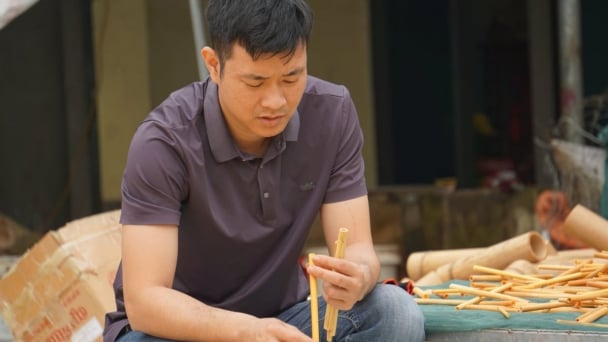
(VAN) Bamboo products from Thang Tho Bamboo Cooperative have reached many countries around the world, while also creating jobs for local workers.

(VAN) The Management Board of Con Dao National Park reported that a green sea turtle, tagged in the Philippines, has traveled thousands of kilometers to lay 84 eggs on Bay Canh Islet.
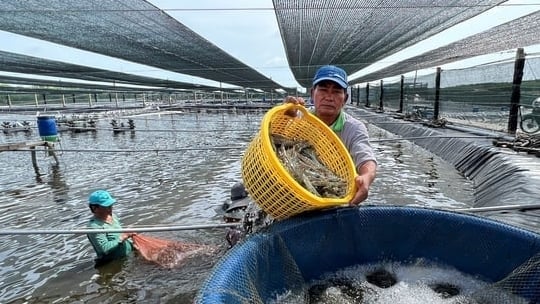
(VAN) Green technology is paving a new path for sustainable aquaculture in the Mekong Delta in particular and across the country in general, helping reduce emissions and adapt to climate change.
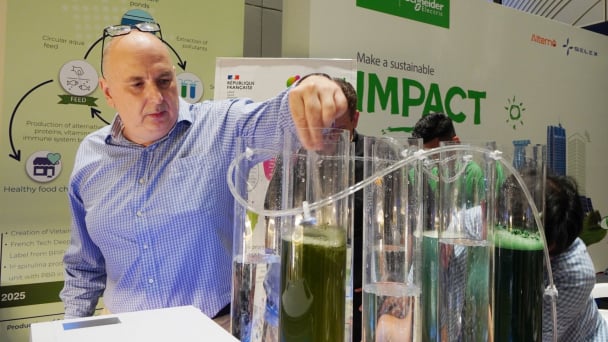
(VAN) On May 27, La French Tech Vietnam (the French startup and innovation community in Vietnam) held the French Tech Summit Vietnam 2025.
/2025/05/27/4731-2-223159_980.jpg)
(VAN) No votive paper, no styrofoam, no plastic bags, no plastic bottles, and no single-use plastic trays are the key rules tourists should keep in mind when visiting Con Dao.
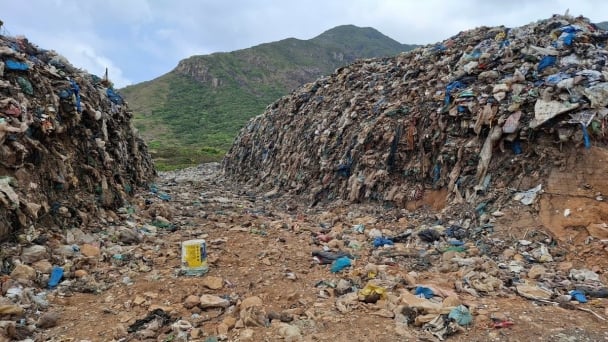
(VAN) In the fight against plastic pollution, Vietnam has been demonstrating a proactive, pioneering, and active role in addressing the greatest environmental challenge today.